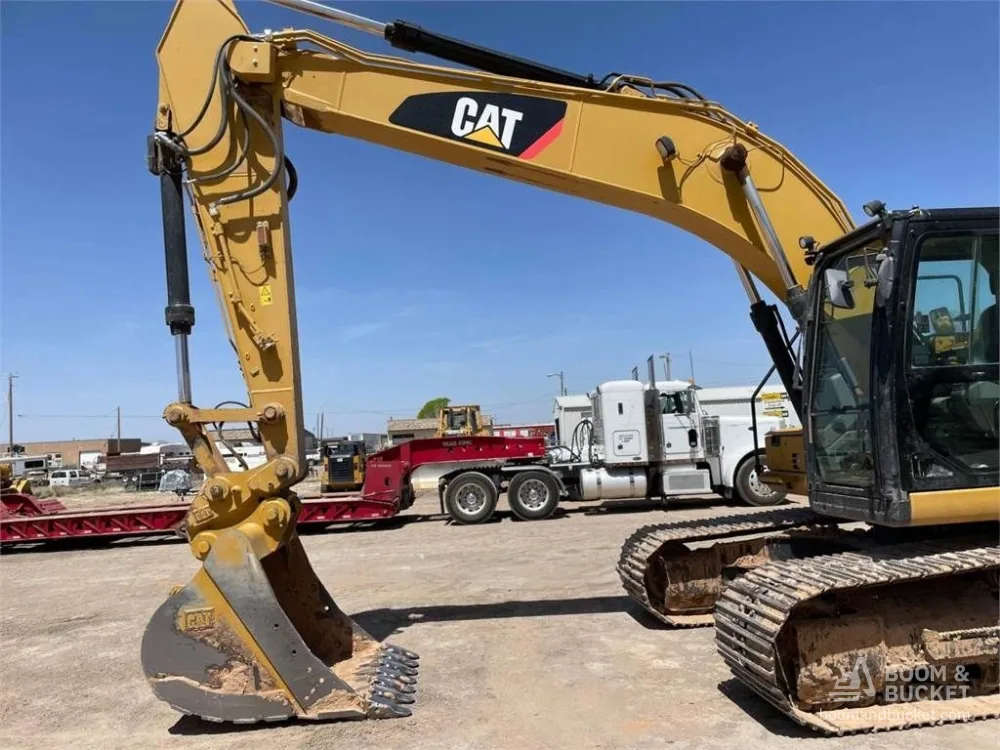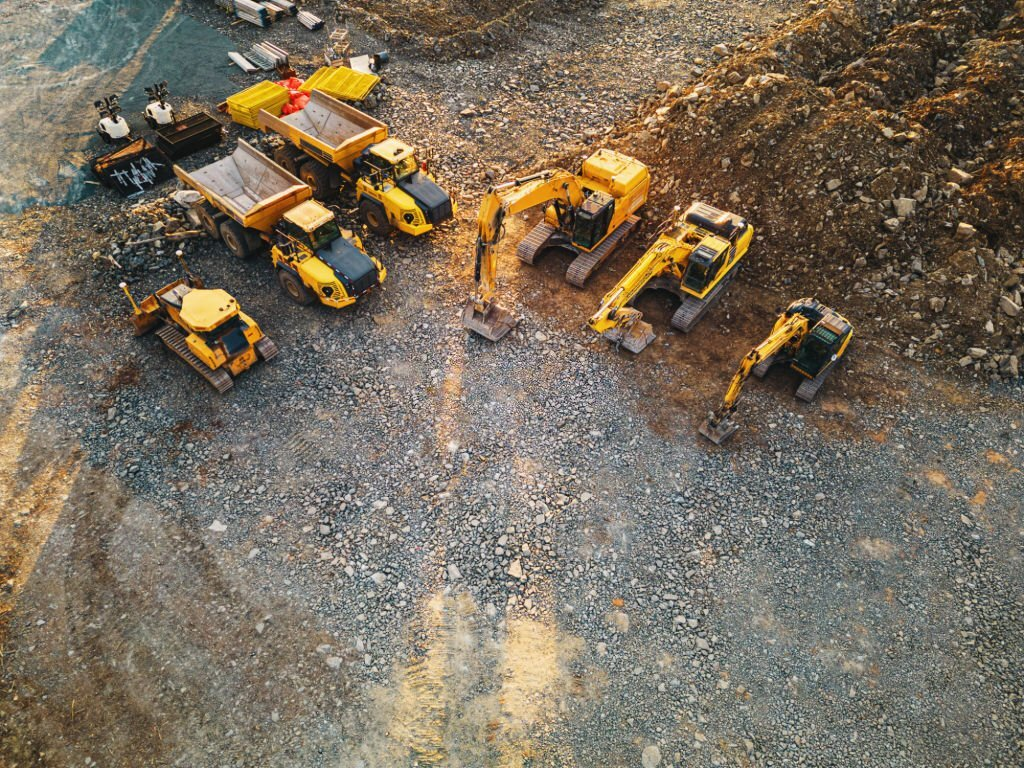
Excavators are powerful machines that play a pivotal role in various industries, particularly construction. These heavy-duty vehicles are designed to dig, scoop, and move large amounts of soil, rocks, and other materials with ease. Equipped with hydraulic systems and robust mechanical arms, excavators have become indispensable in the modern world of infrastructure development.
A Definition of an Excavator
An excavator is a mechanical device commonly used in construction and engineering projects for tasks such as digging trenches, removing debris, demolishing structures, and transporting heavy materials. It consists of a cab mounted on tracks or wheels with a rotating platform known as the ‘house.’ The house contains the operator’s compartment along with the engine, fuel tank, hydraulic pumps, and other vital components that enable the machine’s functionality.
The Importance of Excavators in Construction and Other Industries
Excavators are highly valued for their versatility and efficiency in multiple industries. In construction projects, they provide an essential means for site preparation by clearing land and digging foundations.

Moreover, excavators excel at performing various tasks during the different phases of construction: from excavation to material handling operations. Beyond construction sites, excavators are also widely used in mining operations to extract minerals from below-ground deposits.
They aid in mining tasks such as stripping overburden (removing topsoil or rock cover) before extracting valuable resources like coal or ores. Furthermore, excavators find applications in agricultural activities like land reclamation and drainage system installation.
An Overview of the Different Types of Excavators

The world of excavators encompasses a range of specialized machines tailored to meet specific project requirements. Understanding the various types allows industry professionals to choose the most suitable excavator for their specific needs:
Crawler Excavators: These excavators are equipped with tracks instead of wheels, providing excellent stability and maneuverability on rough terrains. Crawler excavators come in a wide range of sizes, accommodating various digging capacities and serving multiple industries.
Wheeled Excavators: Ideal for urban environments and road construction projects, wheeled excavators possess rubber tires that enhance mobility on paved surfaces. They offer greater speed and flexibility when moving between different work areas.
Mini Excavators (Compact Excavators): As the name suggests, these smaller-sized excavators are designed for tasks requiring precision in confined spaces. Mini excavators excel at landscaping projects, residential construction sites, and other applications where access is limited.
Long Reach Excavators (Super Long Front Excavator): These specialized machines feature extended arm lengths to reach greater depths or heights. They are commonly used in projects that demand deep excavation or working over obstacles like water bodies or building structures.
This comprehensive overview provides a glimpse into the diverse world of excavators, each type catering to specific requirements across various industries. As we delve deeper into each category later in this article, a clearer understanding will emerge regarding their individual capabilities and areas of application.
Crawler Excavators
Tracks for Stability and Maneuverability
Crawler excavators are distinguished by their use of tracks instead of wheels, which provide exceptional stability and maneuverability in various terrains. The tracks enable these excavators to have a lower ground pressure, making them ideal for working on soft or uneven surfaces where wheeled machines may struggle.
Additionally, the tracks distribute the machine’s weight evenly, preventing excessive soil compaction and minimizing damage to the worksite. The rubberized or metal tracks offer excellent traction, allowing crawler excavators to navigate through challenging conditions like muddy or rocky terrains with ease.
Wide Range of Sizes and Capacities
Crawler excavators come in a wide range of sizes and capacities tailored to meet specific requirements. From compact models weighing less than 1 tonne to heavy-duty giants surpassing 100 tonnes, these machines offer versatility across different applications and industries.

Smaller crawler excavators are commonly used for residential construction projects or landscaping tasks where access is restricted, while larger ones are employed in major construction sites or mining operations demanding substantial earthmoving capabilities. Furthermore, this variety extends to the hydraulic attachments that can be fitted onto crawler excavators, such as buckets, breakers, grapples, and augers.
Applications and Industries Where Crawler Excavators Are Commonly Used
One prominent field where crawler excavators thrive is the construction industry. These mighty machines play a pivotal role in various construction sites ranging from urban development projects to remote infrastructure undertakings. In urban areas undergoing expansion or redevelopment initiatives, crawler excavators excel at demolishing existing structures safely and efficiently while preparing the ground for new buildings or infrastructure installations.
Moreover, mining and quarrying operations heavily rely on crawler excavators for their exceptional digging power and robustness in handling earthmoving tasks. From extracting minerals to creating access roads within mines, these excavators prove indispensable in ensuring the smooth operation of such industries.
The versatility and adaptability of crawler excavators make them a staple in numerous applications, providing the force and reliability needed to tackle demanding tasks across multiple sectors. With their tracks providing stability on diverse terrains and their wide range of sizes and capacities catering to various needs, crawler excavators have established themselves as invaluable assets across industries.
Whether it is constructing towering skyscrapers in bustling urban centers or extracting resources deep underground, these machines offer unrivaled performance. Their role as reliable workhorses continues to shape modern construction practices and propel industrial development forward.
Wheeled Excavators

Description and Features
Wheeled excavators, as the name suggests, are equipped with wheels instead of tracks, providing them with enhanced mobility on roads or paved surfaces. This feature allows wheeled excavators to easily navigate between job sites without the need for additional transportation equipment.
The wheels also offer a smoother ride and faster travel speeds compared to their tracked counterparts. In addition to their mobility advantages, wheeled excavators possess unique features that make them well-suited for urban areas with limited space.
Their compact design enables them to maneuver through narrow streets and tight corners more easily than larger crawler excavators. Moreover, these machines often have a smaller turning radius, enabling efficient operation in confined spaces such as congested construction sites or densely populated urban areas.
Applications and Industries where Wheeled Excavators Excel
One prominent application of wheeled excavators is in road construction projects, including highway maintenance. Their ability to swiftly move on paved surfaces makes them essential for tasks like digging trenches for utility lines or installing guardrails along highways.
Wheeled excavators are also commonly used in urban infrastructure development projects such as sewer system installation. Their agility allows them to work effectively in cramped city streets while efficiently excavating and backfilling trenches required for laying sewer pipes.
Furthermore, wheeled excavators find extensive use in various utility projects like water line repairs or cable installations beneath sidewalks or roads. These machines can navigate through urban traffic with ease while maintaining the productivity levels required by these time-sensitive projects.
Their versatility and maneuverability enable contractors to complete complex tasks efficiently while minimizing disruptions caused by construction work. When it comes to landscaping projects within urban areas, wheeled excavators are invaluable due to their ability to access confined spaces like residential yards or public parks without causing extensive damage to existing infrastructure.
From digging small foundation pits for garden features to grading and leveling lawns, wheeled excavators provide the necessary precision and efficiency required for such tasks. Wheeled excavators offer notable advantages in terms of mobility and compact design, making them an ideal choice for various construction projects.
Their ability to traverse paved surfaces with ease, combined with their versatility in navigating urban areas with limited space, makes them vital in road construction, urban infrastructure development, and landscaping projects. The utilization of wheeled excavators helps improve productivity while minimizing disruptions caused by heavy machinery operations in densely populated areas or congested work sites.
Description and Features
Mini excavators, also known as compact excavators, are designed with a smaller size that allows for easy transportation and maneuverability in tight spaces. These machines typically weigh between 1 and 6 tons, making them nimble and versatile on various job sites. Despite their compactness, mini excavators offer impressive digging capabilities with their hydraulic systems.
They are equipped with a boom, arm, and bucket that can be controlled precisely to perform a wide range of tasks. In addition to their size advantage, mini excavators come with a wide range of attachments that further enhance their versatility.
These attachments include buckets of different sizes, grapples for handling debris or logs, augers for drilling holes, breakers for demolishing concrete structures, and many more. With the ability to quickly switch between attachments, mini excavators excel in performing various tasks efficiently without the need for manual labor or other specialized machinery.
Applications and Industries Where Mini Excavators are Commonly Used

One common application of mini excavators is in landscaping projects. Their compact size allows them to navigate through narrow pathways or residential yards easily. Mini excavators are particularly useful when it comes to digging trenches for installing irrigation systems or drainage pipes.
With precise control over the boom and arm movements, these machines ensure accurate digging depths while minimizing damage to existing landscaping features. Moreover, mini excavators find great utility in residential construction sites where access may be limited due to space constraints.
Whether it is digging foundations for small houses or creating trenches for utility line installation in tight urban areas, mini excavators prove invaluable due to their maneuverability and ability to operate effectively within confined spaces. The versatility of mini excavators also extends beyond landscaping and residential construction.
They are commonly used in agriculture for tasks such as digging irrigation ditches or clearing land. Additionally, these machines can be found on utility maintenance projects like repairing water or gas lines in urban areas where larger equipment may not be feasible.
Mini excavators have become a staple in these industries due to their compact design, precise control, and ability to tackle a wide range of tasks through various attachments. Their efficiency and maneuverability make them indispensable asset for completing projects with limited space or delicate surroundings.
Long Reach Excavators (Super Long Front Excavators)
A. Description and FeaturesLong reach excavators, also known as super long front excavators, are specialized machines designed with extended arm lengths to reach greater depths or heights compared to standard excavators. Their arms can extend up to two or three times the length of conventional excavators, allowing them to access challenging areas that would otherwise be inaccessible. These machines are equipped with an additional counterweight at the rear to maintain stability while operating the extended arm. One notable feature of long-reach excavators is their ability to perform precise and controlled operations even at extended distances. This is achieved through hydraulic systems that provide smooth movement and excellent control over the arm’s various functions, such as digging, lifting, and rotating. Furthermore, these excavators often come with advanced technologies like GPS guidance systems for accurate positioning during complex tasks.
B. Applications and Industries Where Long Reach Excavators Are ValuableLong reach excavators find great value in a variety of applications and industries due to their unique capabilities. In dredging projects, for instance, these machines are utilized for deepening water bodies or clearing sedimentation from rivers and harbors. They excel in undertaking tasks such as removing accumulated debris or silt in hard-to-reach areas while minimizing disruption to the surrounding environment. Moreover, long-reach excavators are highly beneficial in construction projects involving bridges or tall structures where elevated work is essential. They can efficiently demolish old structures by reaching high points safely and accurately dismantling them piece by piece. Additionally, these machines play a crucial role in marine construction activities like shoreline protection works or creating artificial islands. Long-reach excavators offer immense value in industries requiring precise excavation at significant distances or heights. Their extended arm length combined with specialized attachments enables them to tackle complex tasks efficiently while ensuring safety and accuracy.
Conclusion
Throughout this article, we have explored the various types of excavators and their distinct characteristics, applications, and industries where they are valuable. From the versatile crawler excavators to the maneuverable wheeled excavators, and from the compact mini excavators to the specialized long-reach excavators, each type serves a specific purpose in diverse sectors such as construction, mining, landscaping, and marine works.
Excavators are truly remarkable machines that have revolutionized many industries by enhancing productivity and efficiency. As technology advances further, we can only expect even more innovative designs and functionalities to emerge.
The future of excavation equipment holds immense potential for streamlining operations and achieving remarkable feats. Whether it be a massive construction project or a small-scale landscaping endeavor, choosing the right type of excavator is crucial for success.
With their wide range of sizes and capabilities, these machines empower engineers and operators to conquer challenging tasks with confidence. So let us embrace the power of these mechanical marvels as they continue to shape our world in extraordinary ways.

